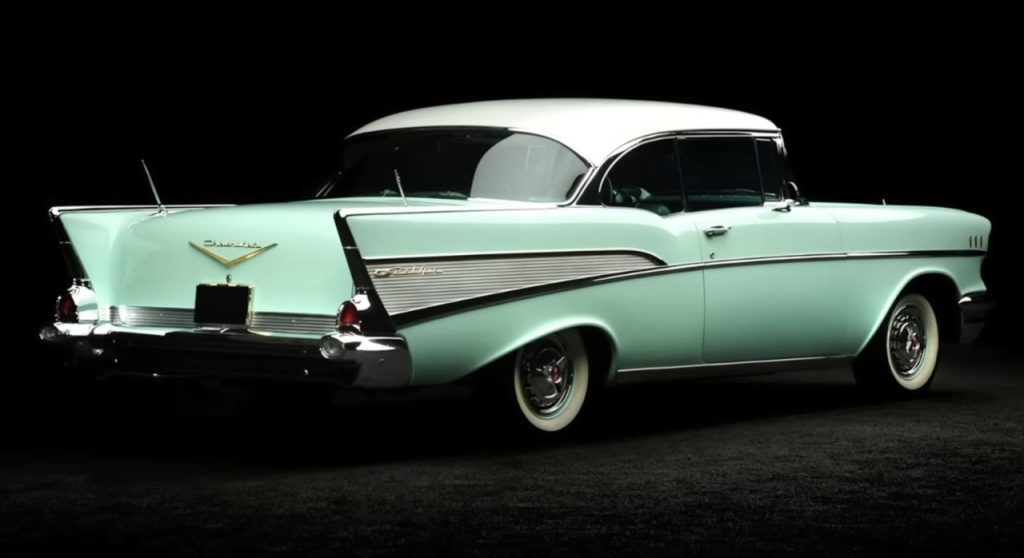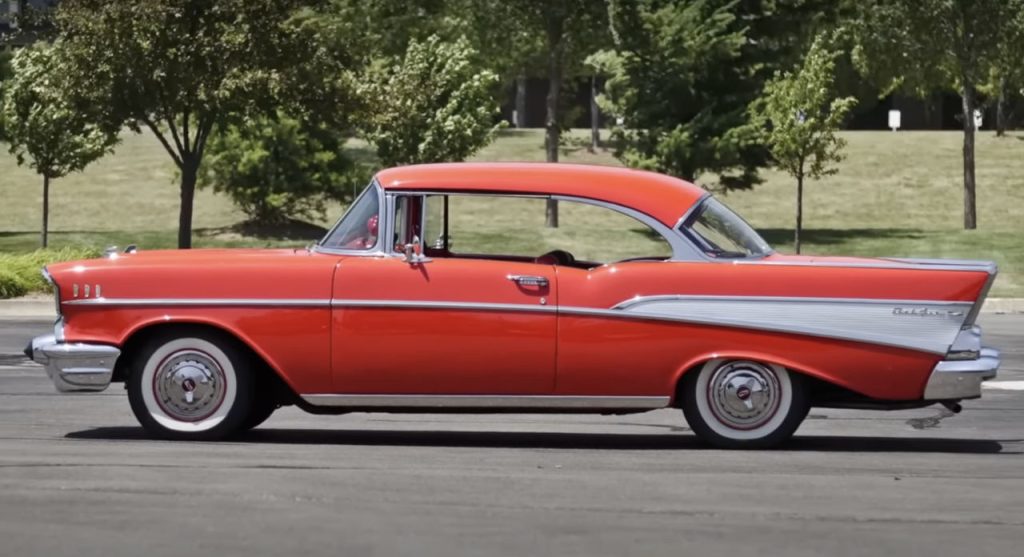The 1957 Chevrolet, also known as the 1957 Chevy, holds a significant place in American automotive history. It was the first mass-produced American car built after World War II to achieve collector car status. Over the years, the 1957 Chevy has become a symbol of timeless design and elegance, captivating car enthusiasts worldwide. In this article, we will delve into the reasons why the 1957 Chevrolet Bel Air is an icon that continues to captivate hearts even today.

The Rise of the 1957 Chevy
In the 1970s, the two-door 1957 Chevy models in mint condition began to command skyrocketing prices, solidifying their status as one of the most beautifully styled cars of the post-World War II era. Even in the midst of the recent surge in classic American muscle car values, the 1957 Chevy’s value continues to rise steadily. While it may not reach the heights of the high-dollar classic muscle cars, the allure of the 1957 Chevy remains unparalleled.
Styling Evolution: Pre and Post-World War II
To truly understand the appeal of the 1957 Chevy, we must trace its roots back to the period before World War II. During the 1930s, the United States was gripped by the Great Depression, which led to utilitarian designs prioritizing function over aesthetics. However, after the war, a long period of prosperity began, and US automakers turned their attention to styling as a means to sell cars.

The Jet Age Influence
In the late 1940s, the “Jet Age” era emerged, inspired by the rise of jet engine-powered airplanes. Automobile designers in the US began incorporating jet airplane design elements into their cars. The most notable feature influenced by this trend was the rear tail fin, reminiscent of airplane tail fins. Several American cars of that time boasted these tail fins, including the 1957 Chevy.
Chevrolet’s Tail Fin Legacy
Among Chevrolet’s models, the 1957 Chevy stood out with its prominent tail fins. Available in four different trim models, namely the 150, 210, Del Rey, and Bel Air, the 1957 Chevy offered options in both two-door and four-door configurations. The Bel Air, particularly the two-door variant, holds a special place of reverence, even surpassing the low-production two-door Bel Air Nomad wagon.

The Perfect Balance of Design
Chevrolet, primarily known as a budget automaker in the 1950s, achieved a perfect balance with the styling of the 1957 Bel Air. Despite being an upscale car, it retained an attractive price point for the average buyer. The Bel Air’s lavish chrome and bodywork, along with exquisitely styled body panels, made it visually appealing. The iconic tail fins were the highlight of its design.
Unintended Perfection
Interestingly, Chevrolet didn’t fully realize the uniqueness of the 1957 Bel Air during its production years. It was only in subsequent years that its true significance became apparent. The 1957 Bel Air’s form took precedence over function, making it a work of art in the automotive world. Even compared to the 150 and Del Rey, the Bel Air’s more pedestrian counterparts, it surpassed expectations with its exterior trim and aesthetic finesse.

Symmetry and Aesthetics
The 1957 Chevy had a hidden design element that complemented its upscale exterior trim — perfect symmetry. From chrome rocket hood ornaments and headlights to front bumper rets and tail fins, everything came in pairs. Even the optional radio antennas were doubled, creating a visually pleasing and balanced aesthetic. The fuel tank filler cap was discreetly placed behind the driver’s side rear taillight, preserving the car’s overall sleek lines.
Interior Elegance and Performance
Moving inside the 1957 Bel Air, one is greeted by a colorful and spacious interior. The tastefully designed dashboard and instrument layout further enhance the car’s appeal. Under the hood, the base model came with a 140-horsepower 250 cubic inch Blue Flame six-cylinder engine. For those seeking more power, Chevrolet introduced the new 283 cubic inch V8 engine, available in six different versions with varying horsepower ratings. The high-performance variants of the 283 V8, equipped with dual four-barrel carburetors or fuel injection, were also used in the legendary 1957 Corvette.

Transmission Options
The 1957 Bel Air offered a range of transmission options to suit different driving preferences. It could be equipped with a three-speed manual transmission, a three-speed manual with overdrive, or a two-speed Powerglide automatic transmission. During the second half of the 1957 model year, Chevrolet also introduced a floor-mounted four-speed manual transmission, further enhancing the car’s sporty character.
A Timeless Classic
It is safe to say that Chevrolet will never produce another car quite like the two-door 1957 Bel Air. This automotive masterpiece stands as a testament to a bygone era, capturing the essence of a time when aesthetics and design took center stage. As the years pass, the 1957 Bel Air will continue to be a rolling Mona Lisa, increasing in value and leaving an indelible mark on the world of automobiles.

Conclusion
The 1957 Chevrolet Bel Air is an automotive icon that has stood the test of time. Its captivating design, featuring extravagant chrome, sleek body lines, and iconic tail fins, continues to inspire enthusiasts and collectors. From its impeccable symmetry to its meticulously designed interior, the 1957 Bel Air represents an era of automotive artistry and elegance. As the years go by, its value only appreciates, cementing its position as a true classic in the hearts of automotive enthusiasts worldwide.